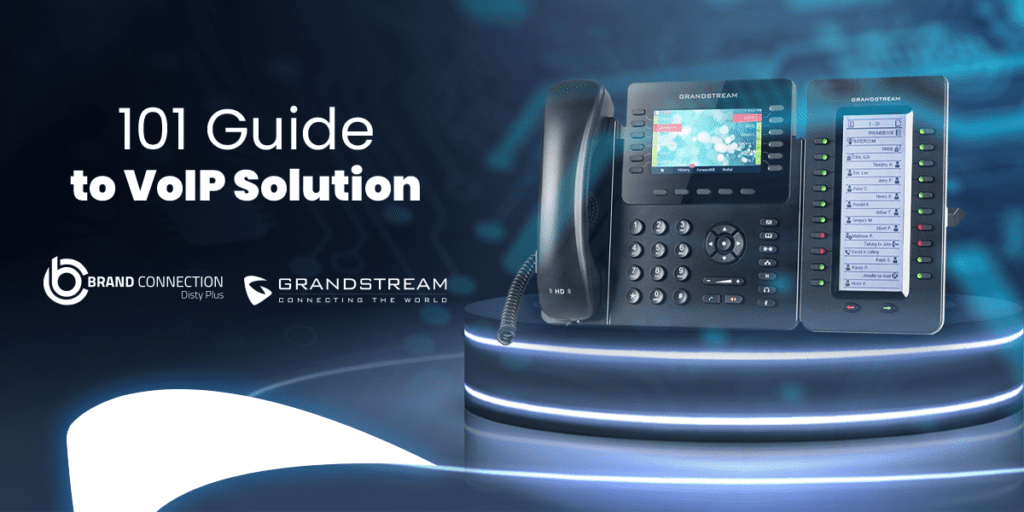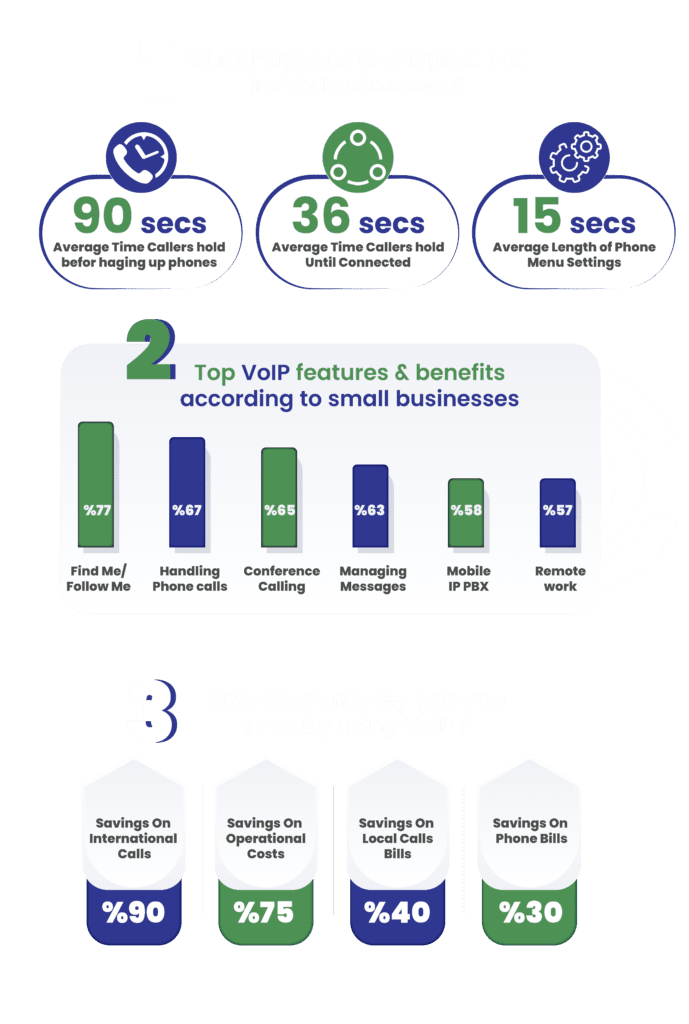Blog

101 guide to VoIP solution

Landline phones have been vital to organizations for decades, from enabling communication with customers and within the company, phone communication is critical to business operations. However, they have limitations in connecting you wherever you are, while mobile devices have overcome this issue but can be expensive solution.
You may ask yourself what is the alternative then? VoIP is your answer, now what is VoIP exactly? let us introduce you to the next level in the communication world.
What is VoIP?
VoIP, or Voice over Internet Protocol, was introduced in 1995 as a substitute for traditional landline telephony. It allows for the transmission and reception of phone calls over the Internet, removing the necessity for long-distance and international calls by utilizing an Internet connection to transmit voice communications.
VoIP technology has been particularly beneficial for businesses, as it enables more cost-efficient call management by eliminating the need to route calls through the complex global network of dedicated phone switch hubs. With VoIP, phone calls are no longer limited to traditional cell phones and landlines, as you can now make calls through your laptop or desktop computer
How does VoIP work?
VoIP systems use the internet network to route phone calls, instead of relying on traditional copper phone lines. This enables VoIP phones to perform the same functions as traditional analog phones, while also providing access to advanced features through the cloud, such as video and file sharing.
From a technical standpoint, VoIP converts your voice into data and transmits it through the internet, whereas traditional phones send voice signals directly through the Public Switched Telephone Network (PTSN) using dedicated hardware. VoIP eliminates the need for exclusive hardware and allows internet bandwidth to be shared across different use cases.
Now that you understand what a VoIP phone system is and how it works the right question now is “Why switch to VoIP? What does VoIP have to offer my business?
8 Reasons to Switch to VoIP
- Lower Costs: VoIP reduces telecommunication operating and capital expenditure, eliminates long-distance charges, and requires fewer in-house resources to maintain communications.
- Value: VoIP provides advanced features like call recording and auto-attendant, improves productivity and efficiency, and offers more for less cost.
- All-In-One: VoIP ties together all communications through a single business number, enables ringing on multiple devices, and allows access to voicemail via email.
- Integration with Other Applications: VoIP is easily integrated with existing CRM platforms and other applications, streamlining communications across organizations.
- Mobility: VoIP phone capabilities allow phone numbers to follow users wherever they go, providing accessibility and reducing costs for remote and international communication.
- Scalability: VoIP easily adds and removes phone lines to adapt to changing business needs, and can be adapted to existing hardware and devices.
- Business Continuity: VoIP provides flexibility and adaptability crucial for ensuring business continuity and avoiding downtime, as communications can continue even in the event of power outages or service disruptions.
- Voice Quality: VoIP uses high-quality digital connections to transmit calls, reducing dropped calls, improving sound quality, and minimizing delays or interruptions.

What are the steps to get VoIP services?
Assuming you meet the criteria, switching to VoIP can be done through a simple 5-step process.
Step 1: Find VoIP distributors
During this step, you will need to take into account several factors such as cost, features, call quality, customer support, and the ability to integrate the service with your existing hardware. Although there are many distributors available, it is important to find an authorized distributor
Step 2: Connect with the chosen distributor
After deciding which distributors to work with, you should connect with them to determine the location where you can port your current phone numbers, allowing the numbers to remain the same over VoIP.
Step 3: Configure Your Setup
Your distributors will assist you in integrating the VoIP system with your phones, smartphones, and other devices, allowing for a new setup.
Step 4: Test Your New Phone Service
Make a test call to ensure your new VoIP service is working properly and you can make and receive calls without any issues.
Step 5: Enjoy VoIP
Once you have finished the aforementioned steps, you can begin experiencing the benefits of your new VoIP service advanced features, and reduced costs. However, there is an option to skip these steps by engaging with a managed services provider like Brand Connection which is capable of conducting all of the research and arduous tasks on your behalf, and they excel at collaborating with top vendors and developing solutions.
VoIP Market size is expected to reach over USD 100 billion by 2032, according to a recent research report by Global Market Insights Inc.
Mobile VoIP solutions are gaining considerable popularity when enterprise mobility is becoming crucial for many large and small businesses worldwide. Many organizations are evolving to meet the needs of employees who travel often or work from home regularly. Enterprise mobility allows the use of personal laptops and mobile phones for remote working. Users need to download specific software to make and receive VoIP calls to utilize this feature. Its advantages are attracting more users to adopt the system for business and professional purposes.

